As spring arrives in full force, the algae are starting to come back in the intertidal. The past two mornings I went out on the low tides to look for something very specific (which I did find–more on that later) and noticed the resurrection of the more common red algae. So early in the season the algal thalli are nice and clean, not yet having been fouled or munched. And, like all babies, they’re pretty dang cute.
Here’s a little clump of Endocladia muricata, a red alga with the common name ‘scouring pad alga.’ I’ve also heard it referred to as ‘pubic hair alga,’ by a former instructor of marine botany who shall remain nameless.
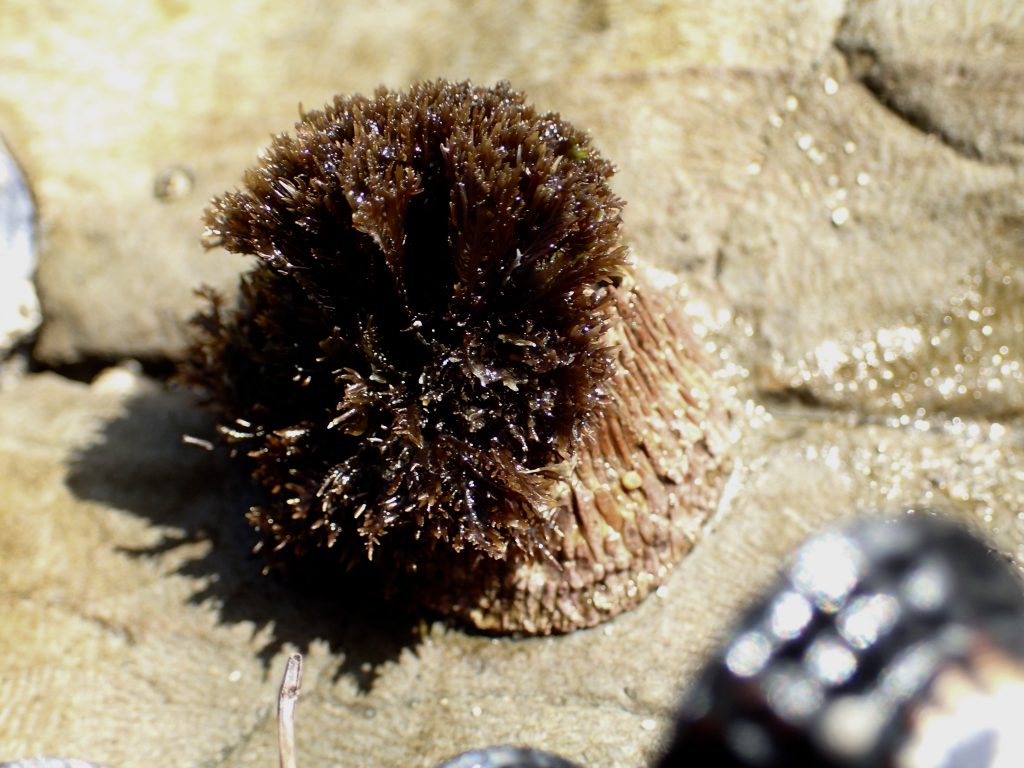
1 April 2017
© Allison J. Gong
What I tried, and failed, to capture in this photo is that the strands have little thornlike extensions that give them the texture of . . . a scouring pad. Here’s a better picture of a larger clump, and if you squint you might be able to see what I’m talking about.
And here’s another baby red, this gorgeous little piece of Plocamium. When they’re young like this the branching structure is easier to see. And isn’t that color splendid? Especially with the green of the fresh young surfgrass.
What I was really thinking about this morning were the morphological similarities that can make it very difficult to distinguish between different species. For example, there are three species of rockweeds that are common around here: Fucus distichus, Silvetia compressa, and Pelvetiopsis limitata. Rockweeds are brown algae but are usually olive-green in color, and live in the high mid-intertidal above the mussel zone. In some places all three species occur together. Fucus (see below) is easy to recognize because its blades are wider and somewhat straplike, with prominent midribs. When Fucus is reproductive the tips of the blades become swollen and full of a gooey mucilage, which contains the gametes. There are other interesting things about sex in Fucus, and at some point I may address those in a later post.
The other rockweeds, Silvetia and Pelvetiopsis, are a lot more difficult to distinguish. They both have less straplike blades. They share a generalized dichotomous branching pattern, but in neither is it as consistent as it is in Fucus.
This morning these two specimens were growing side by side. In terms of scale the overall length of Silvetia is about twice that of Pelvetiopsis. Keeping that in mind, what you can’t tell from these photos is that Silvetia is also coarser and stiffer, like pasta that is about a minute short of being cooked al dente–not hard, but still more firm that you’d probably like it to be. Pelvetiopsis, on the other hand, is rather soft and much more flexible.
If I were to ask you to contrast these organisms based solely on the photos above, you might say that Silvetia looks somewhat less orderly than Pelvetiopsis. And you would be right! The almost-but-not-quite-dichotomous branching in Silvetia doesn’t always occur in the same plane, resulting in a thallus that doesn’t lie flat. Look at this:
See how those branches, especially the terminal branches, don’t all come off in the same direction? That’s what I mean. A cross-section of Silvetia‘s blades would be somewhere between flat and cylindrical, also contributing to the tendency of this thallus not to lie flat. This means that when you press it it does get a little mashed looking.
Pelvetiopsis, on the other hand, is a much more regular beast. The blades are distinctly linear in cross-section and generally branch in one plane. One other thing to note is that in Pelvetiopsis the terminal branch tips are very short relative to the overall thallus length compared to those of Silvetia.
A fair question to ask is: How can you tell the difference between a baby Silvetia and a full-grown Pelvetiopsis? Absolute size might not be a useful characteristic, but the other morphological traits are. The branching orientations and overall blade shapes are fairly consistent throughout the size range for each species. Consistent enough, at least, to make a good gut-level first ID guess.
I wanted to write about this because I saw the organisms, checked them off in my head, and then backed up a bit. I found myself second-guessing my instincts when it came to identifying these specimens. I mean, I know these organisms. Or, I think I do. It’s frustrating to look at the creatures I see regularly in the intertidal, organisms whose names I learned many years ago (even through the inevitable taxonomic name changes), and say to myself, “Wait a minute; is that right?” This led me to seriously consider these two rockweed species and evaluate what I really know about each of them. How do I know that one specimen is Pelvetiopsis, when it looks a hell of a lot like a baby Silvetia? I think this unusual self-doubt has to do with post-concussion syndrome. For the past several months I’ve known that words fly out of my mind as I’m trying to recall them. Why not names as well? At this stage in my recovery I’m supposed to be slowly challenging my brain as well as continuing to rest it. Finding that balance has been tricky. In a few weeks I will have my early morning low tides back. It will be easier for me to drive to intertidal sites then, and I’m going to use tidepooling as therapy. It has been good for my soul in the past, and I hope that it will also be good for my brain in the near future.

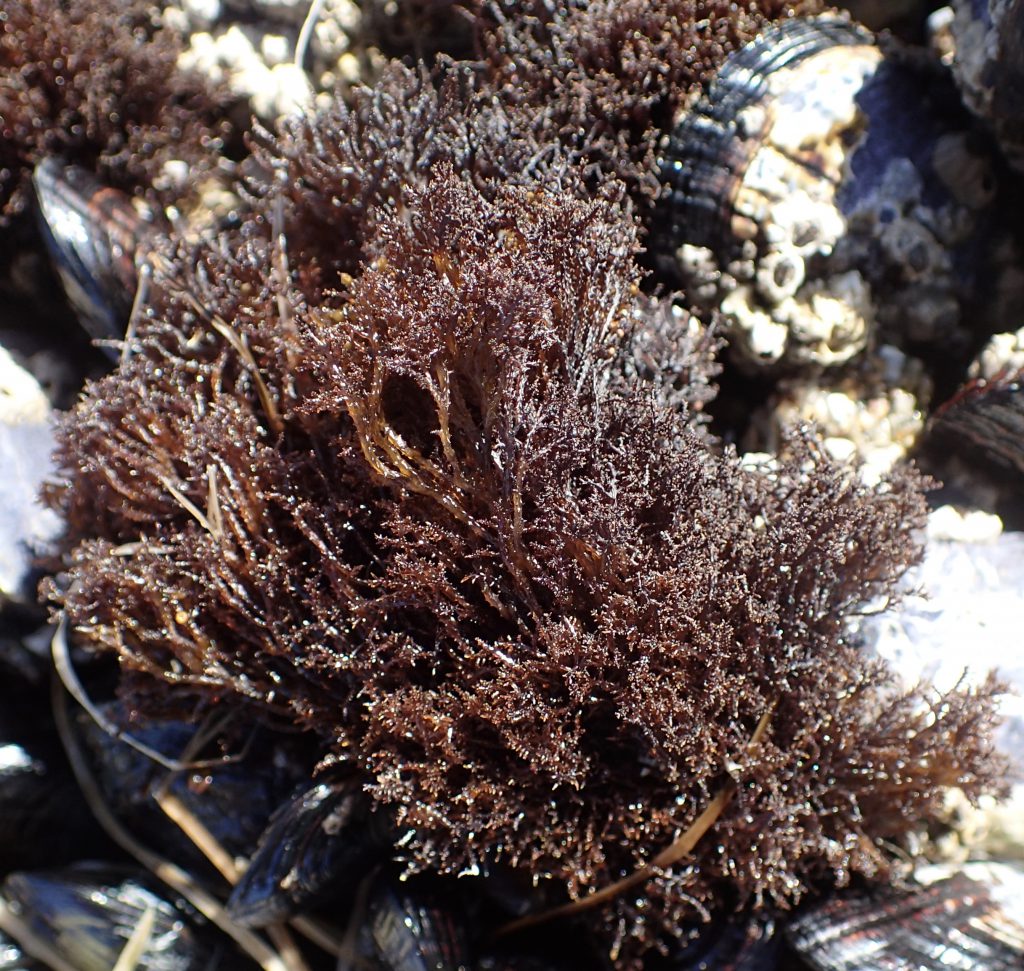
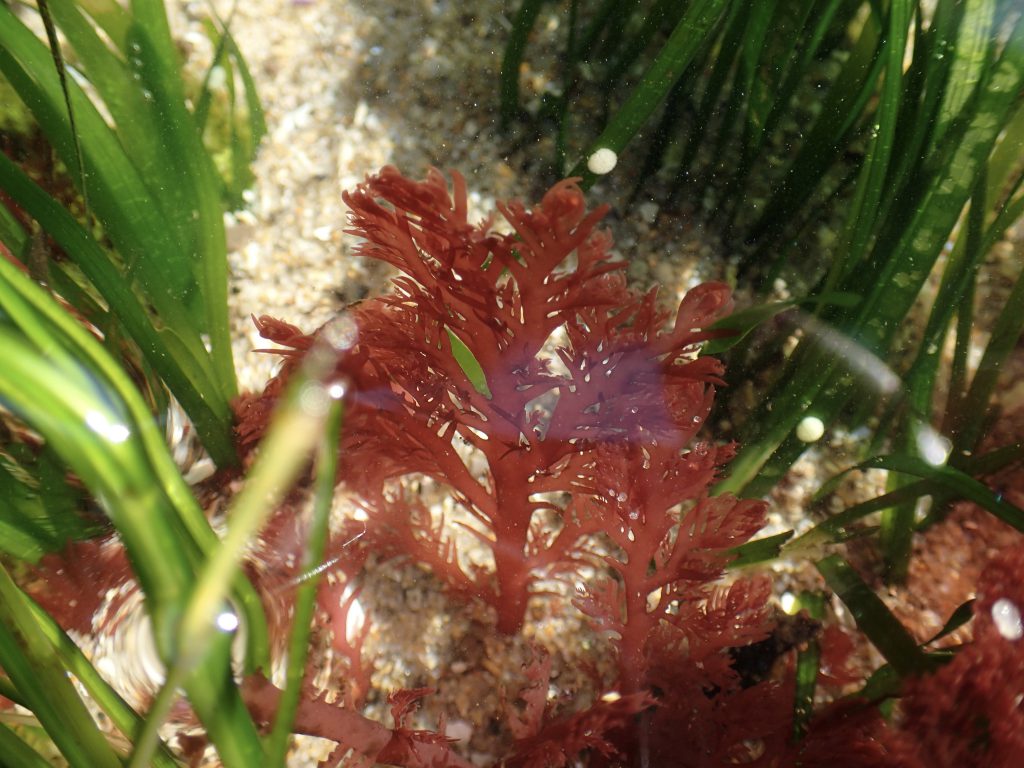

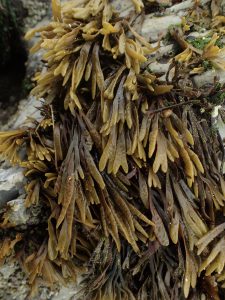
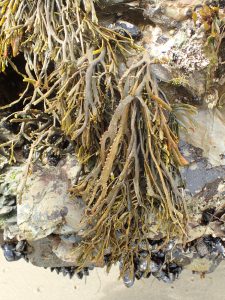
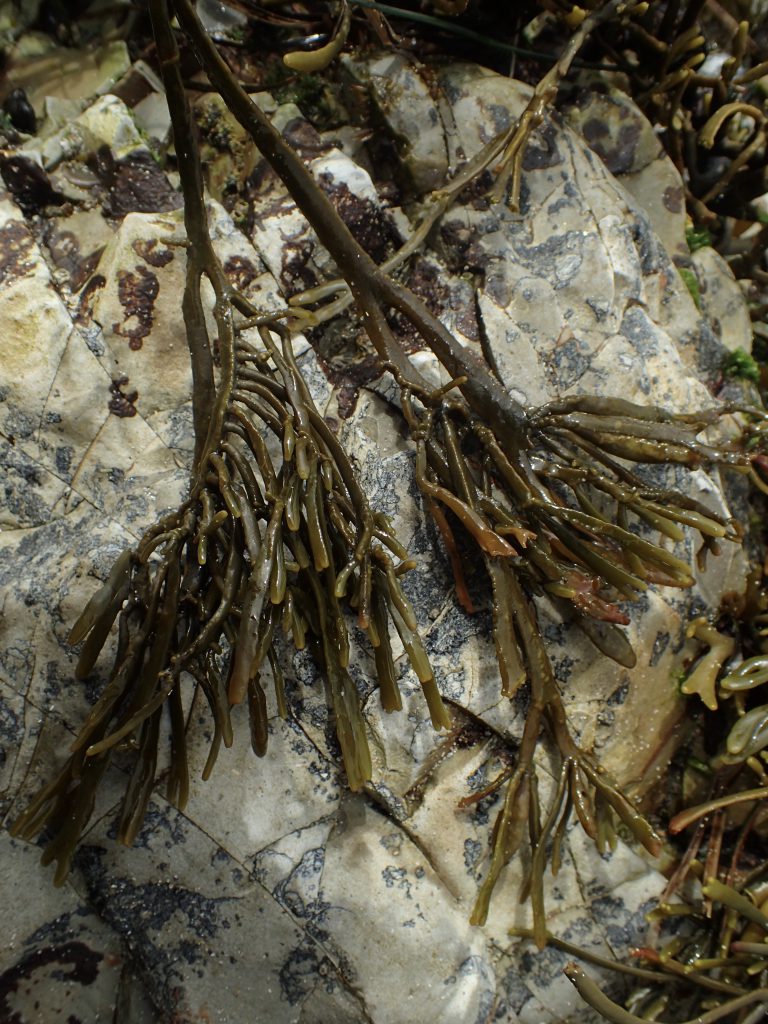
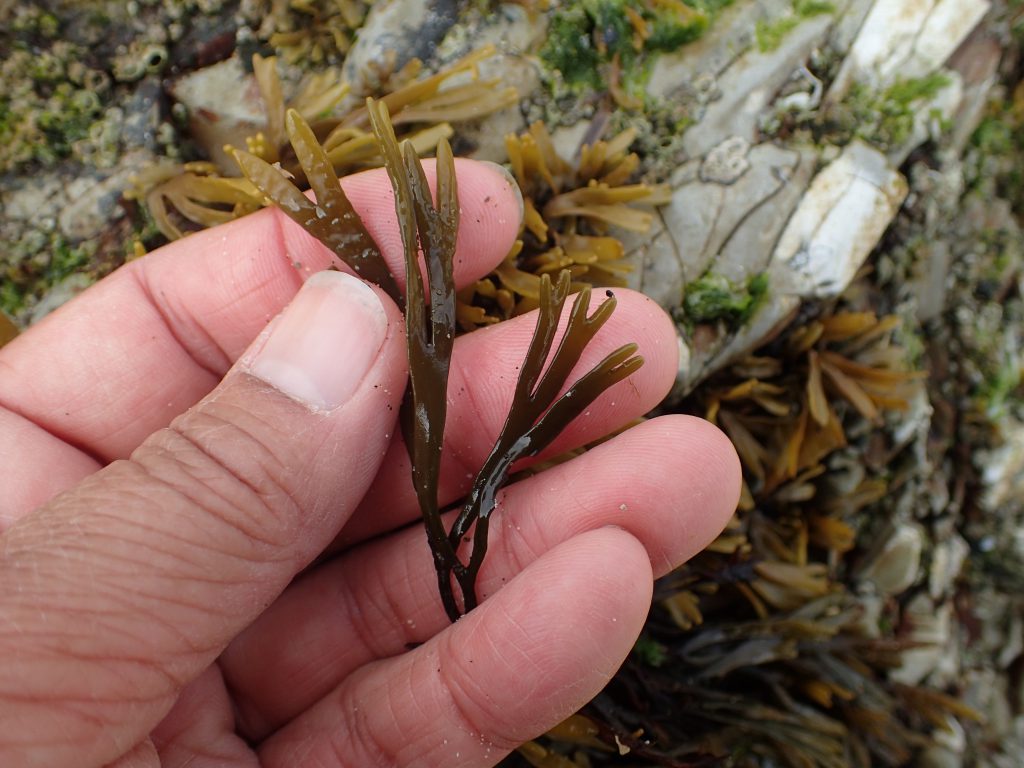
1 thought on “They deserve a prettier name than “rockweed””